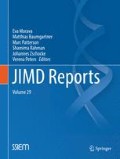Abstract
Fabry disease is an X-linked sphingolipid storage disorder caused by a deficiency of the lysosomal enzyme α-galactosidase A (AGA, EC 3.2.1.22) resulting in the intracellular accumulation of globotriaosylceramide (Gb3). We found that Gb3 storage also correlates with accumulation of endosomal–lysosomal cholesterol in Fabry fibroblasts. This cholesterol accumulation may contribute to the phenotypic pathology of Fabry disease by slowing endosomal–lysosomal trafficking. We found that LDL receptor expression is not downregulated in Fabry fibroblasts resulting in accumulation of both cholesterol and Gb3. 5A-Palmitoyl oleoyl-phosphatidylcholine (5AP) is a phospholipid complex containing a short synthetic peptide that mimics apolipoprotein A1, the main protein component of high-density lipoprotein (HDL) that mediates the efflux of cholesterol from cells via the ATP-binding cassette transporter. We used 5AP and HDL to remove cholesterol from Fabry fibroblasts to examine the fate of accumulated cellular Gb3. Using immunostaining techniques, we found that 5AP is highly effective for depleting cholesterol and Gb3 in these cells. 5AP restores the ApoA-1-mediated cholesterol efflux leading to mobilization of cholesterol and reduction of Gb3 in Fabry fibroblasts.
Competing interests: None declared
Access this chapter
Tax calculation will be finalised at checkout
Purchases are for personal use only
References
Amar MJ, D’Souza W, Turner S et al (2010) 5A apolipoprotein mimetic peptide promotes cholesterol efflux and reduces atherosclerosis in mice. J Pharmacol Exp Ther 334:634–641
Askari H, Kaneski CR, Semino-Mora C et al (2007) Cellular and tissue localization of globotriaosylceramide in Fabry disease. Virchows Arch 451:823–834
Brown MS, Goldstein JL (1975) Regulation of the activity of the low density lipoprotein receptor in human fibroblasts. Cell 6:307–316
Chatterjee S, Kwiterovich PO (1984) Glycosphingolipids and plasma lipoproteins: a review. Can J Biochem Cell Biol 62:385–397
Clarke JT, Stoltz JM, Mulcahey MR (1976) Neutral glycosphingolipids of serum lipoproteins in Fabry’s disease. Biochim Biophys Acta 431:317–325
Fantini J, Yahi N, Garmy N (2013) Cholesterol accelerates the binding of Alzheimer’s β-amyloid peptide to ganglioside GM1 through a universal hydrogen-bond-dependent sterol tuning of glycolipid conformation. Front Physiol 4:120
Glaros EN, Kim WS, Quinn CM et al (2005) Glycosphingolipid accumulation inhibits cholesterol efflux via the ABCA1/apolipoprotein A-I pathway: 1-phenyl-2-decanoylamino-3-morpholino-1-propanol is a novel cholesterol efflux accelerator. J Biol Chem 280:24515–24523
Mechtler TP, Stary S, Metz TF et al (2012) Neonatal screening for lysosomal storage disorders: feasibility and incidence from a nationwide study in Austria. Lancet 379:335–341
Neufeld EB, Stonik JA, Demosky SJ et al (2004) The ABCA1 transporter modulates late endocytic trafficking: insights from the correction of the genetic defect in Tangier disease. J Biol Chem 279:15571–15578
Puri V, Jefferson JR, Singh RD, Wheatley CL, Marks DL, Pagano RE (2003) Sphingolipid storage induces accumulation of intracellular cholesterol by stimulating SREBP-1 cleavage. J Biol Chem 278:20961–20970
Remaley AT, Amar M, Sviridov D (2008) HDL-replacement therapy: mechanism of action, types of agents and potential clinical indications. Expert Rev Cardiovasc Ther 6:1203–1215
Schiffmann R, Rapkiewicz A, Abu-Asab M et al (2006) Pathological findings in a patient with Fabry disease who died after 2.5 years of enzyme replacement. Virchows Arch 448:337–343
Schulze H, Sandhoff K (2011) Lysosomal lipid storage diseases. Cold Spring Harb Perspect Biol 3(6)
Sethi AA, Stonik JA, Thomas F et al (2008) Asymmetry in the lipid affinity of bihelical amphipathic peptides. A structural determinant for the specificity of ABCA1-dependent cholesterol efflux by peptides. J Biol Chem 283:32273–32282
Stephan ZF, Yurachek EC (1993) Rapid fluorometric assay of LDL receptor activity by DiI-labeled LDL. J Lipid Res 34:325–330
Thurberg BL, Fallon JT, Mitchell R, Aretz T, Gordon RE, O'Callaghan MW (2009) Cardiac microvascular pathology in Fabry disease: evaluation of endomyocardial biopsies before and after enzyme replacement therapy. Circulation 119:2561–2567
Utsumi K, Seta T, Katsumata T et al (2006) Effect of selective LDL-apheresis in a Fabry patient with recurrent strokes. Eur J Neurol 13:429–430
Walkley SU, Vanier MT (2009) Secondary lipid accumulation in lysosomal disease. Biochim Biophys Acta 1793:726–736
Author information
Authors and Affiliations
Corresponding author
Editor information
Editors and Affiliations
Additional information
Communicated by: Gregory M. Pastores, MD
Rights and permissions
Copyright information
© 2015 SSIEM and Springer-Verlag Berlin Heidelberg
About this chapter
Cite this chapter
Schueler, U. et al. (2015). A Short Synthetic Peptide Mimetic of Apolipoprotein A1 Mediates Cholesterol and Globotriaosylceramide Efflux from Fabry Fibroblasts. In: Morava, E., Baumgartner, M., Patterson, M., Rahman, S., Zschocke, J., Peters, V. (eds) JIMD Reports, Volume 29. JIMD Reports, vol 29. Springer, Berlin, Heidelberg. https://doi.org/10.1007/8904_2015_507
Download citation
DOI: https://doi.org/10.1007/8904_2015_507
Received:
Revised:
Accepted:
Published:
Publisher Name: Springer, Berlin, Heidelberg
Print ISBN: 978-3-662-53277-5
Online ISBN: 978-3-662-53278-2
eBook Packages: Biomedical and Life SciencesBiomedical and Life Sciences (R0)

